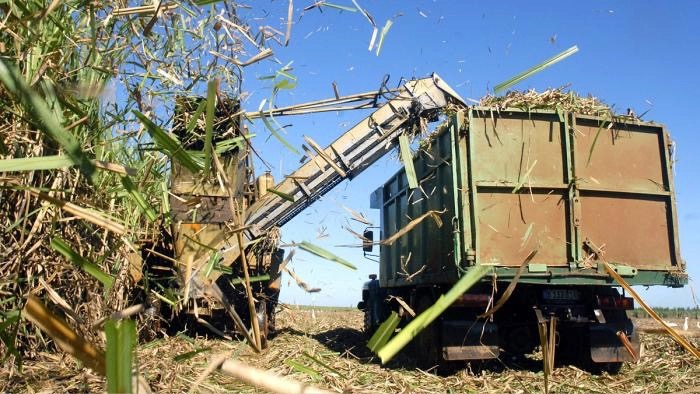The news about the upcoming execution of 16 projects, with foreign investment, to modernize the sugar industry and build a power plant with a refinery, a 100 MW electricity generation block, and an alcohol distillery, confirms the government's decision to continue ignoring the causes of the deterioration suffered by this branch of the economy.
Cuba, which once exported six million metric tons of sugar, now has to import it. This fact illustrates the magnitude of the damage done to sugar production. Any recovery would require two conditions, thus far absent: an accurate diagnosis and a corresponding treatment. The absence of these requirements can only be explained by the following: ignorance, deliberate lying, scamming Cubans and investors, or a combination of these.
If in 1948 six million tons were produced, and in 1952 the figure was over seven million, the reckless attempt to produce ten million tons in 1970, in addition to paralyzing the country with such a useless effort, triggered a decline until 2001, when production was less than 3.5 million tons; less than half the amount from 1952, and a volume similar to that produced in 1894, when the War of Independence had not yet broken out.
In the face of the debacle, as if the country were a military camp, in that year, 2001, an Army general was appointed to head the Sugar Ministry, charged with producing six million tons. To this end the Alvaro Reynoso Task was implemented with a view to producing 54 tons of cane per hectare (when the world average was around 70 tons) and the industry was restructured to extract 11 tons of sugar for every 100 tons of cane. The following year, 100 of the 156 existing mills were closed and sugarcane fields were used for other crops, with part of them becoming overgrown with marabou.
The results were immediate. In 2005, production was 1.3 million tons. The response to the new failure consisted of creating the municipal agricultural delegations, a new bureaucratic apparatus to more closely control the productive base. Five years later, in 2010, only 1.1 million tons could be produced.
Without taking into account the causes of the decline, in 2011 the Sugar Ministry was replaced by the AZCUBA business group, and one of the Guidelines of the Economic and Social Policy of the Party and the Revolution, stated: "to gradually increase the production of sugar and sugarcane derivatives until obtaining the revenue making it possible to finance total operating expenses, plus the value of the investments that are made, ultimately making a net contribution to the country." However, the harvest of that year was below 1.3 million tons, and so on, until in 2021 production fell to a new low of 816,000 tons.
As the minimum production to meet national demand and international commitments is one million tons, the need to buy sugar abroad was put on the agenda. Once the engine of its economy, and Cuba the world's leading producer and exporter, the country went on to swell the list of sugar-importing countries, but still it did not change course.
In 2021 the 8th Congress of the Communist Party (PCC), instead of setting down a new path, ratified state enterprises and the socialist planning system (the causes of the setbacks) as the main formulas for the management of the national economy. The result was immediate: in 2023 production dropped to 487,000 tons.
In this harvest, that of 2024, the results will be worse. In January, a month after the start, only 11 of the 25 plants were operating. According to the director of IT and Communications at AZCUBA, the delay was due to "technical deficiencies detected late." An example of inefficiency is that the Antonio Guiteras and Majibacoa power plants, through the end of March, had only produced 25% of the 61,000 tons planned, and both had squandered more than 80% of their time. This indicates that the country will not exceed 300,000 tons, which is insufficient to meet national demand. The projects and changes introduced since 2001 have had no other result than to accelerate the decline of the sugar industry, on the verge of destruction.
Any diagnosis, unrelated to political or ideological reasons, must be based on the main causes of the decline: the structure of property, the absence of freedoms, the ignorance of the laws that govern economic phenomena, the lack of correspondence between salaries and the cost of living, the loss of a sugar culture, the decapitalization of specialized labor, the deterioration of sugar mills, and the conversion of more than a hundred former sugar mill towns into ghost towns. All these factors are affected by voluntarism and determinations not to make changes that could threaten political power.
No project that aims to boost Cuban sugar production can be limited to foreign investment, which, although essential, is unable, as previous projects have been, to save a terminally ill patient on its own.
